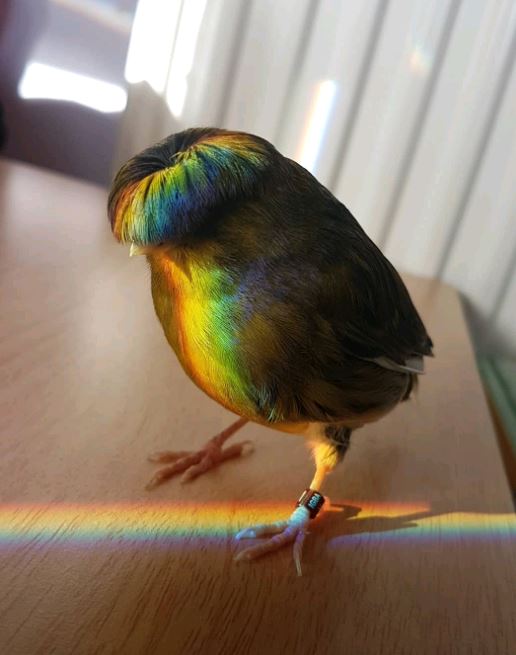The magnificent great tits have an impressive black crown and a pure white cheek that is not divided. In contrast, blue tits boast a striking blue dome and a contrasting black stripe on their white cheek.
The blue tips on male and female birds show noticeable differences. You might have come across the fact that male blue tits are more vibrant in color than females, making it seem easier to distinguish them when they’re spotted together in a garden.
It’s not realistic to depend on luck to tell the difference between male and female blue tits. These birds are unlikely to hang around or come close enough for you to make a clear distinction. Identifying their gender solely based on appearance can also be challenging.
Recognition of breeding season in blue tits Although male blue tits have a more vivid plumage and a darker blue crest, these traits are not easily noticeable unless the bird is stationary. However, observing their behavior during mating season can simplify the identification process. Below are some behavioral cues to help distinguish between male and female blue tits.
In April, it’s easy to tell the difference between male and female blue tits as it marks the start of their breeding season. During this time, both sexes are busy with different activities. The female blue tits work alone to construct their nests using moss, followed by finding soft lining materials like wool, hair, fur, and feathers. This process takes around one to two weeks. On the other hand, the male blue tits become more territorial and engage in small fights with other males to defend their females. It’s fascinating to learn that male blue tits are naturally polygamous and take care of all the females and their chicks inside their borders.
As May starts, female blue tits begin laying eggs, and it becomes less likely to spot them. With the daily task of laying one egg every day, they have little time and energy left for other things. They usually lay a large clutch of eight to twelve eggs, which can sometimes go up to 16.
Unlike the female blue tit, the male blue tit frequently returns during this season to provide food for his mate who is incubating the eggs. The female blue tit removes feathers from her breast, creating a “brood patch,” which allows her skin to stay in contact with the eggs and keep them warm. After hatching, the male blue tit takes on most of the feeding responsibility, while the female occasionally assists by providing caterpillars and insects as the nestlings’ primary source of food.
During the off-season, distinguishing between male and female blue tits may be difficult. Observing their behavior and habits in your garden can help you identify their gender based on their tasks. Look for differences in neckbands and stripes to distinguish between males and females, and try to spot both at the same time for easier comparison.
Guide to Attracting Blue Tits to Your Garden These vibrant and playful birds are loved by many for their lively chirping and cheerful personalities. Compared to more common birds like blackbirds and sparrows, blue tits stand out with their stunning colors. But how do you entice them to visit your garden? Here are some tips to consider:
Food Blue tits have a particular affinity for suet balls and pellets, among other feed options. To lure them in, consider placing these feeders away from trees or fences that could serve as perches for domestic cats – the biggest threat to blue tits.
By following these simple guidelines, you can create a welcoming environment for these delightful garden guests to enjoy.








